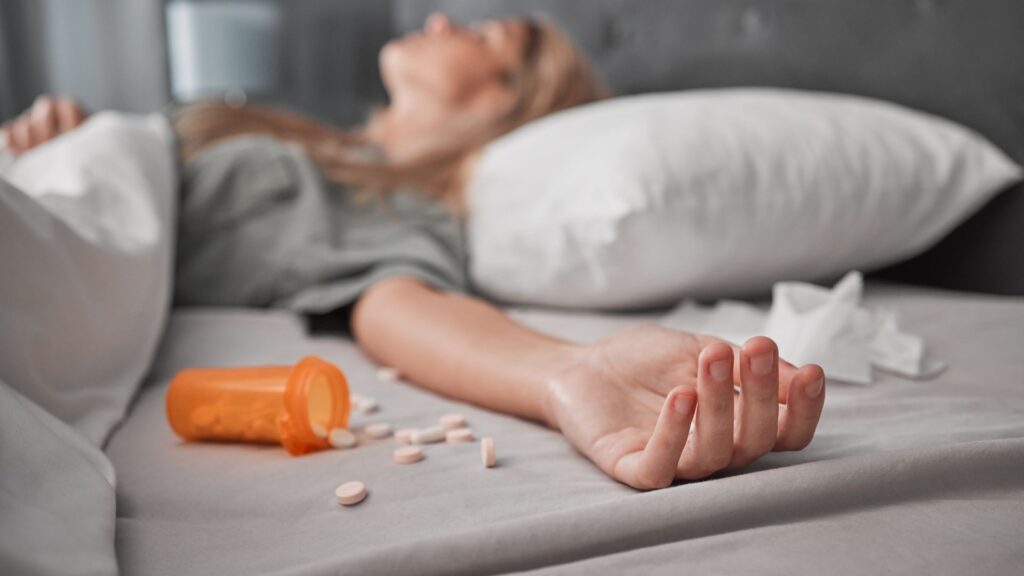Opioid poisoning is a severe medical emergency requiring immediate attention; it can happen anytime and anywhere. If you encounter someone going through this emergency, you are a crucial player in saving a life, but do you know how to help?
In this blog post, we will go through a step-by-step guide for managing opioid poisoning emergencies, from how to identify the symptoms of opioid poisoning to the process of stabilizing and providing them with the necessary medical treatment until an Emergency Medical Responder arrives.
What are Opioids?
In general, opioids are prescribed as medication to relieve pain after surgery or during the treatment of chronic illnesses. They are a class of drugs derived from the opium poppy plant or synthesized to mimic their effects. They primarily work by binding to opioid receptors in the brain, spinal cord, and gastrointestinal tract, which are involved in pain and reward pathways. This binding reduces the perception of pain and induces a sense of euphoria, relaxation, and drowsiness.
There are three main categories of opioids: natural, semi-synthetic, and synthetic. Natural opioids, like morphine and codeine, are alkaloids found in the opium poppy. Semi-synthetic opioids, such as oxycodone and hydrocodone, are created by chemically modifying natural opioids. Synthetic opioids, like fentanyl and methadone, are entirely man-made but designed to interact with the same receptors as natural opioids.
The misuse of opioids, including prescription drugs and illicit substances like heroin, has led to a public health crisis known as the opioid epidemic. This crisis has resulted in significant morbidity and mortality, with poisoning being a leading cause of accidental death in many countries. Efforts to combat the opioid epidemic include improving prescribing practices, expanding access to addiction treatment, and promoting the use of alternative pain management strategies.
Opioid poisoning emergencies can occur when a person ingests or injects too many drugs, intentionally or accidentally.
There are several symptoms of opioid poisoning, and in most cases, they can be life-threatening or deathly if they are not treated immediately by a first responder. As a bystander, you play an essential role too, and anything you do is protected under the good samaritan laws in Canada.

Inquire about First Aid Training
Do you have questions regarding First Aid training? Contact us today! Our customer service representatives are ready to assist you.
Signs of Opioid Poisoning
The symptoms or signs of opioid poisoning may vary on the drug and severity of the poisoning. Still, with the proper CPR/AED training, you can recognize and assist a person in maximizing their survival chances.
Among the most evident signs of a poisoning are;
- Slow or shallow breathing: In an overdose emergency, opioids can suppress the respiratory system, which can cause hypoxia (when the body does not receive enough oxygen).
- Pinpoints pupils: Opioid use may cause the pupils to become abnormally small, resembling the size of a pinpoint.
- Confusion or dizziness
- Difficulty staying awake
- Blue or purple lips and nails: Opioids can reduce the amount of oxygen in the blood, causing a decoloration of lips and nails.
- Cold or clammy skin: Drugs, including opioids, affect the body’s blood circulation; hence it is decreased the flow of blood to the skin, which results in cold and clammy skin.
- Unconsciousness
On the other hand, with first aid and CPR training, you will learn to identify clues and treat some other symptoms like;
- Vomiting
- Seizures
- Weak pulse
- Choking or snoring sounds
- Chest tightness
Steps to respond to a possible opioid poisoning
Timing is vital when witnessing a poisoning emergency, so you must use your first aid skills to react effectively and stabilize the patient until further medical assistance arrives.
- Call 9-1-1
- If you are a bystander, you may not have the right equipment to treat the patient; for this reason, you need to call your local emergency number and inform the situation.
- Get an AED and a Naloxone kit
- An Automated External Defibrillator can be found in public spaces such as airports, schools and office buildings. It can significantly increase the chances of survival for someone in cardiac arrest.
- Naloxone is either available as a nasal spray or injection. It is a drug that helps reverse the effects of opioid poisoning until professional medical care arrives.

- Check vital signs and proceed accordingly
- Opioid poisoning can escalate rapidly, so you need to remember to check and re-check vital signs often. With naloxone, a person’s condition might evolve promptly.
- Although Naloxone will not hurt the person and is decisive in saving someone’s life, always follow precise instructions when administering it to a patient.
- Start CPR
- If the patient is still unresponsive and not breathing, you must start CPR based on your training.
- Alternatively, you can provide one more dose of naloxone and continue CPR until the EMR arrives.
- If the person is unresponsive but breathing normally, you can give them naloxone and monitor their condition closely until the ambulance gets to the place.
How to give Naloxone to a patient in an opioid poisoning emergency?
As mentioned before, naloxone is a medication that will help a patient facing a poisoning emergency; it helps to revert the effects of opioid poisoning and restore normal breathing. Naloxone is available in several forms, including injection, nasal spray and auto-injector, and can be administrated by medical professionals and trained people.
The easiest way to provide naloxone to a patient is by nasal spray, and the right way to do it is:
- Remove the nasal spray device from the package of your naloxone kit.
- Place your thumb on the plunger and your middle and index fingers on the nasal spray tip.
- Support the person’s head in this posture by gently tilting it back.
- Insert the device’s tip inside one of the individual’s nostrils until your fingertips touch the bottom of the nose.
- By pressing hard on the plunger, administer the complete amount, and then withdraw the device from the person’s nostril.
Remember that the effects of naloxone are temporary, and the situation could escalate, so it is vital to seek medical assistance in an opioid emergency.

First Aid Training for Opioid Poisoning
Opioid poisoning is a severe medical emergency that requires prompt attention; having first aid training within your skillset can make a difference in stabilizing a patient and getting them the necessary medical treatment. At Coast2Coast, you can be a hero and save lives; we offer First Aid training that prepares you for poisoning emergencies. Our first aid courses teach you to perform all the correct steps to help save lives confidently. Blended and all-in-class WSIB-approved courses are available in several locations across Ontario.




















